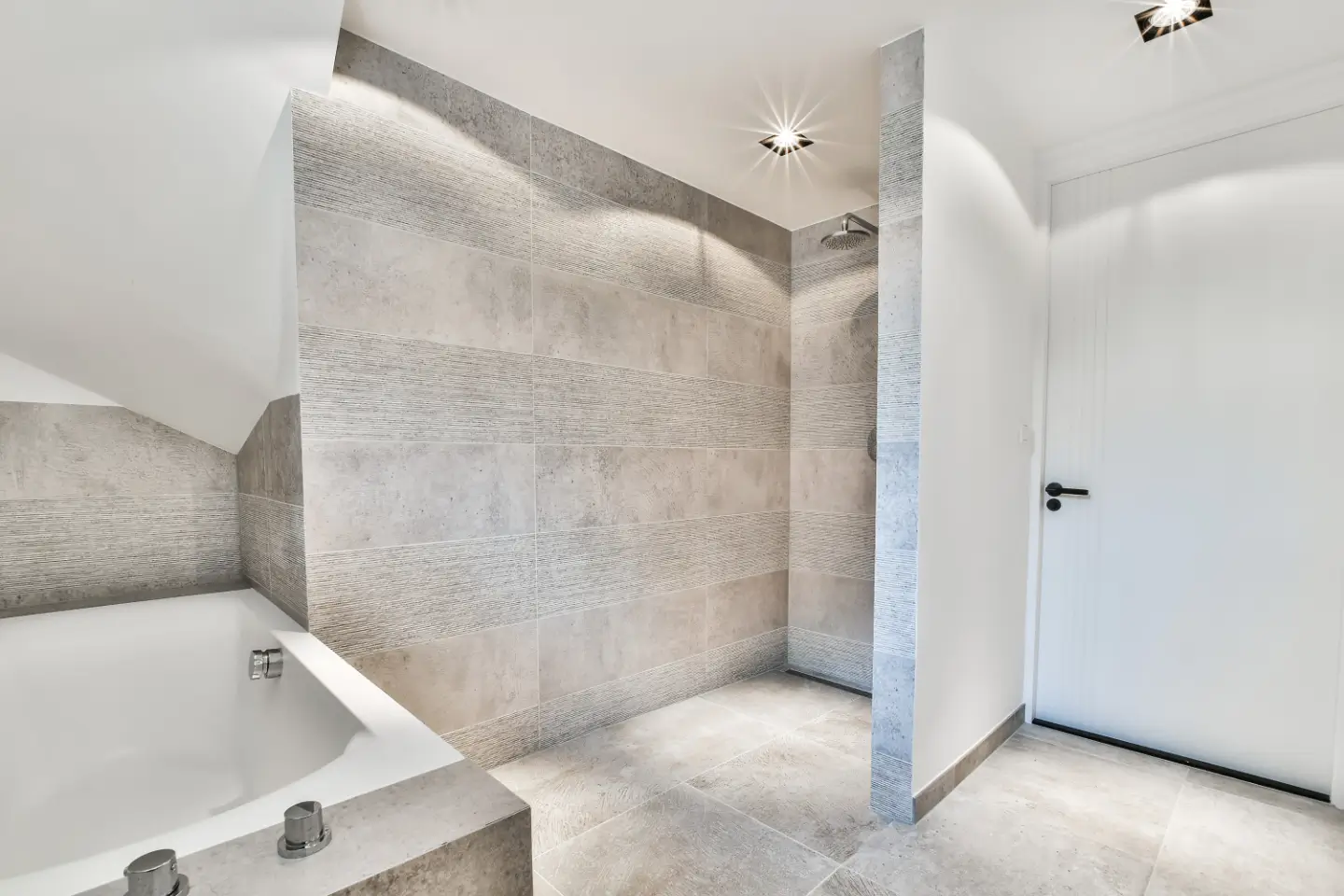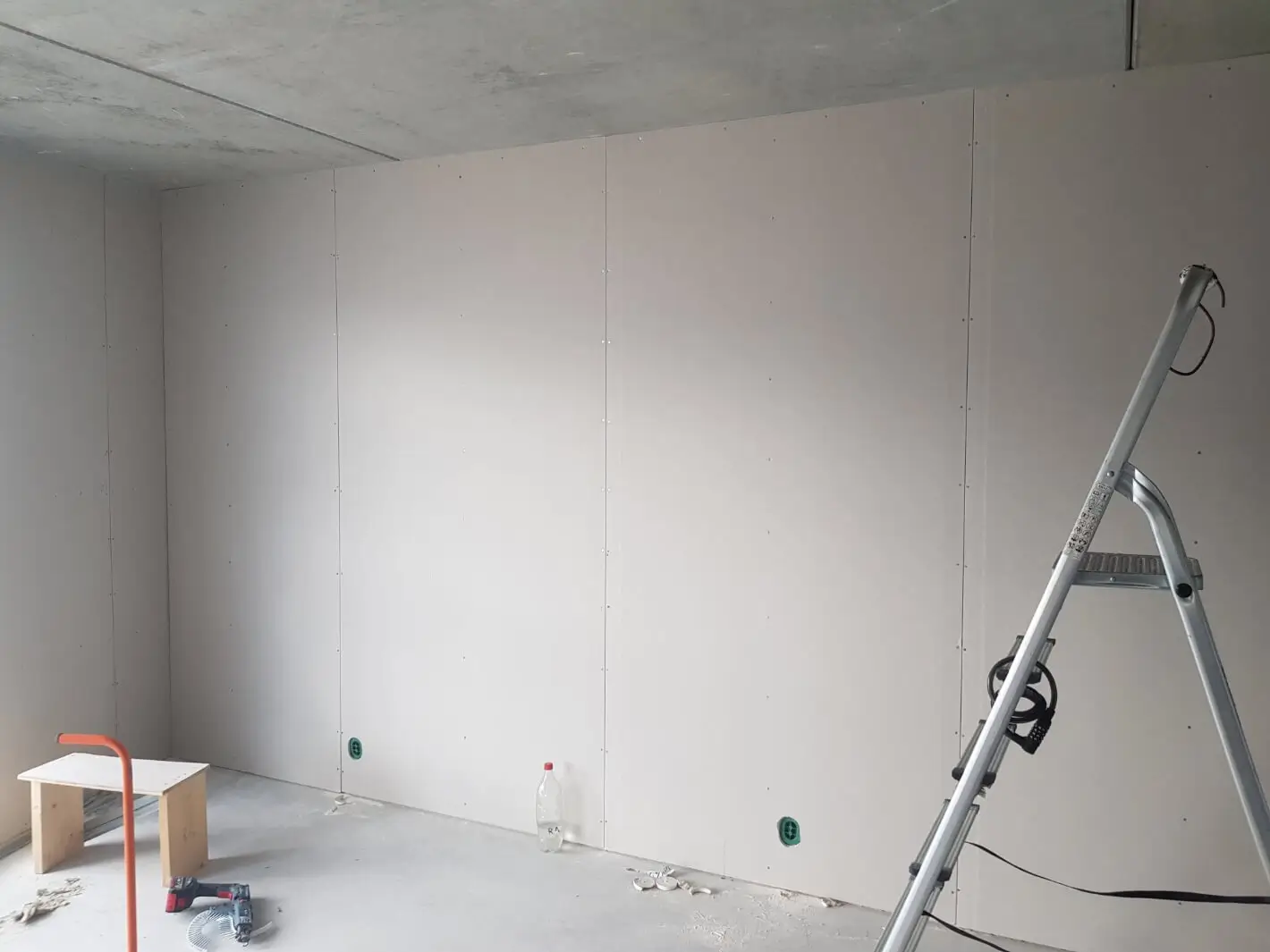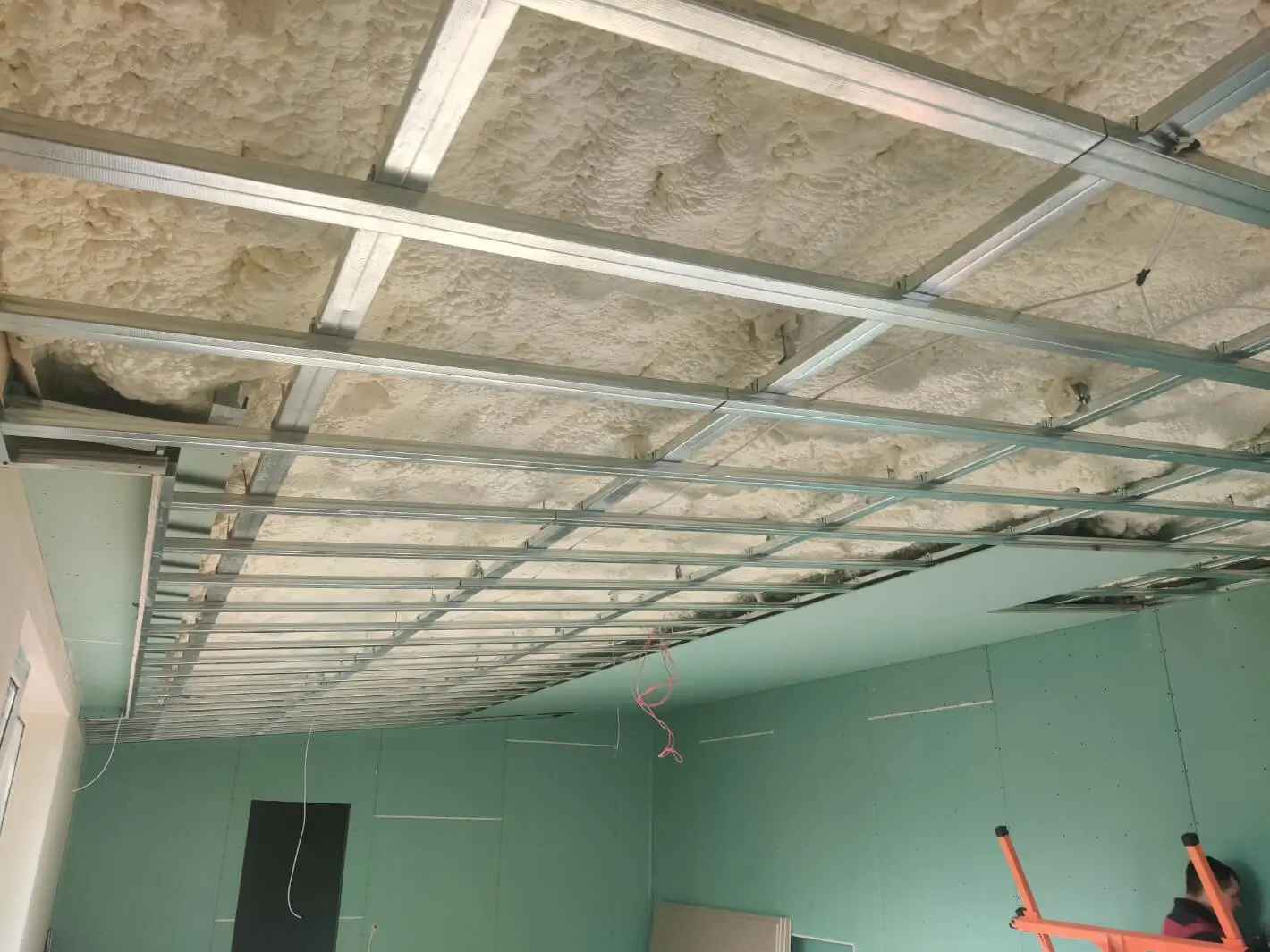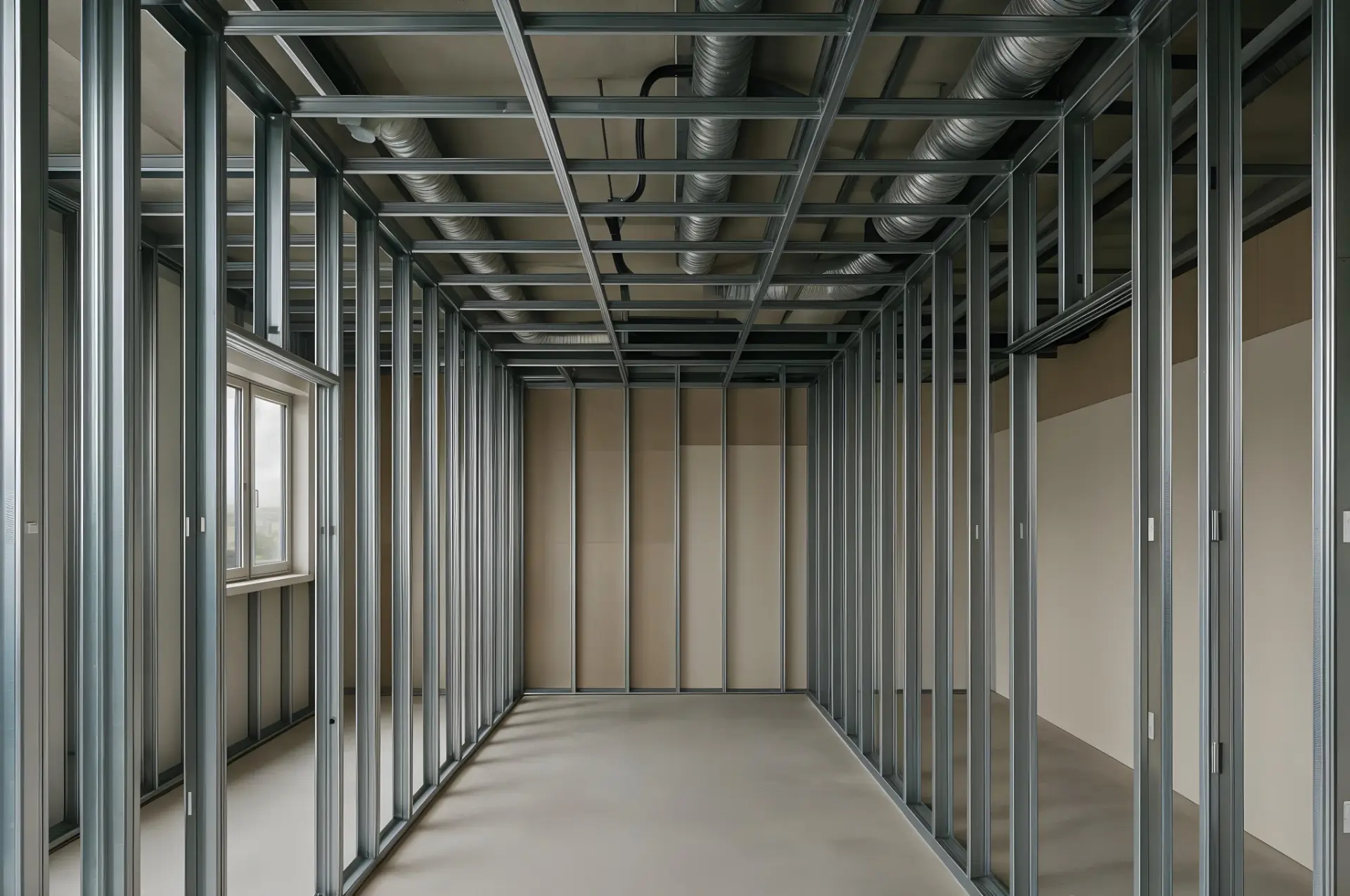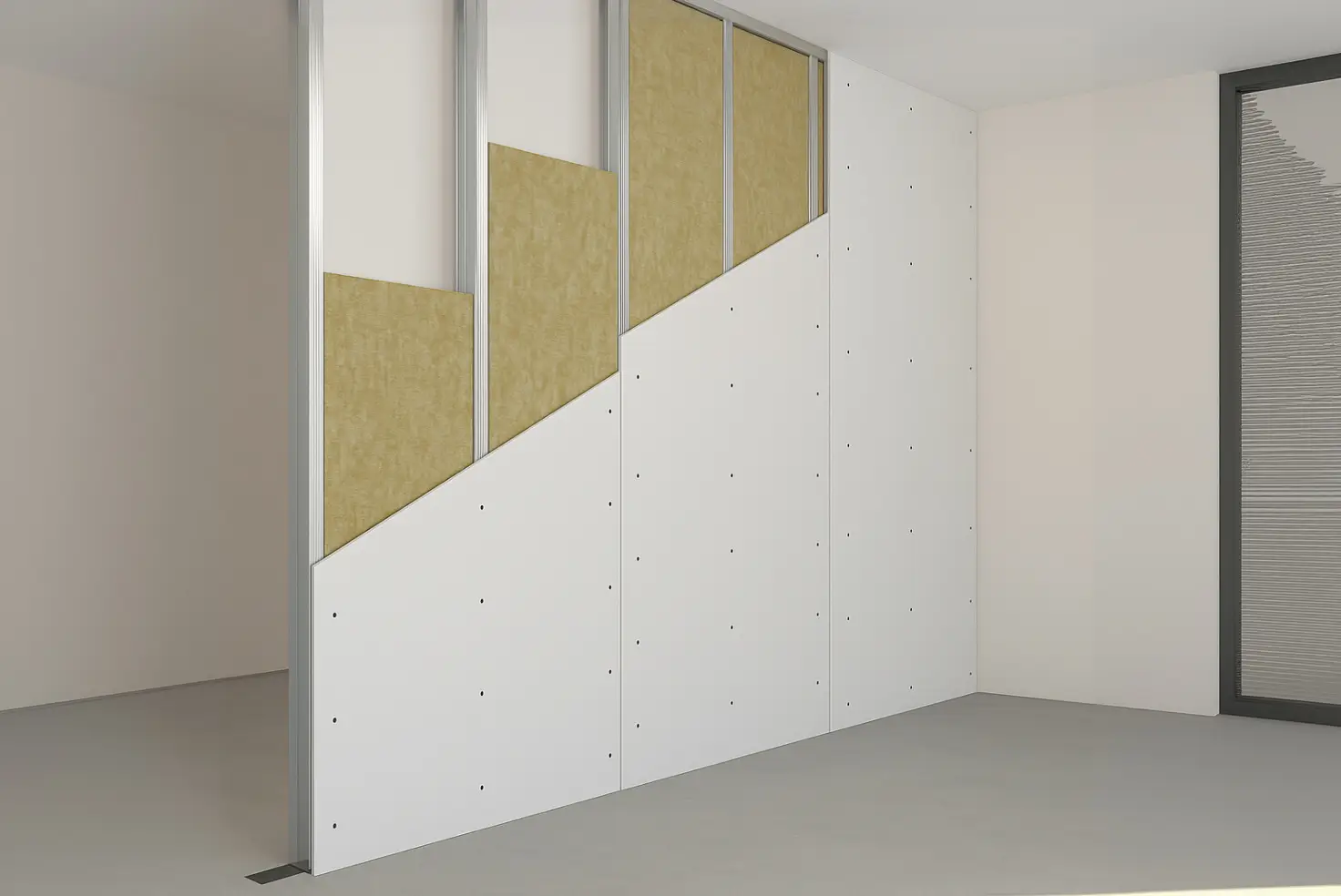When planning an interior renovation or new build in Norway, one detail often gets overlooked: which type of gipsplate (drywall) to use. For homeowners and professionals alike, this can lead to unexpected issues-especially when moisture enters the picture.
Not all drywall is the same. In fact, choosing between standard gipsplater and moisture-resistant boards like Gipsplate Humid can make the difference between a wall that lasts decades, and one that needs tearing down after two winters.
At Andronor, we specialize in gips wall systems across homes, offices, and commercial interiors around Oslo. This guide will help you decide which type of drywall fits where-so you can build smarter from the inside out.
Standard Gipsplate Explained: Where It Works and Where It Fails
Standard drywall-commonly referred to in Norway simply as “gipsplate”-is made of a pressed gypsum core with a paper surface. It’s a tried-and-true material, especially for dry, insulated interior spaces.
You’ll most often find standard drywall in:
- Living rooms
- Bedrooms
- Offices
- Hallways
Standard Gips Advantages:
- Easy to cut, install, and finish
- Affordable
- Lightweight
- Works well in dry, heated environments
Limitations of Regular Gips:
- Offers no protection against moisture
- Prone to mold or softening if humidity builds up over time
- Not recommended for wet or even semi-damp rooms
Especially in Norway-where winters bring condensation and summers carry high humidity-using regular gipsplate in the wrong place can lead to mildew, bubbling paint, and expensive rework.
Humidity-Resistant Gyps Explained: When to Use Moisture Resistant Drywall
In Norway, moisture-resistant drywall is often labeled as “Gipsplate Humid” or “våtromsgips”. These boards are treated with water-repellent additives and typically have a special coating or core that prevents quick moisture absorption.
Some even confuse them with fully waterproof panels-but there’s an important distinction.
What Makes Moisture-Resistant Gips Suitable for Humid Interiors:
- Resistant to humid air, steam, and occasional splashes
- Treated to slow down mold growth
- Ideal for rooms like laundry rooms, bathrooms (outside shower zone), and basements
Why Gipsplate Humid Isn’t a Waterproof Alternative
- Not a replacement for Litexplater or cement board in wet zones like inside showers
- Doesn’t make a bathroom “waterproof” without ventilation and surface sealing
Also known as:
- Gipsplate Humid (Norwegian standard)
- Green board / blue board (international terms)
It’s a smart middle ground-especially for walls near sinks, washing machines, or ventilation outlets, where moisture may accumulate but not stay constant.
Moisture-Resistant vs. Standard Gips – Key Differences
| Feature | Standard Gipsplate | Gipsplate Humid / Våtromsgips |
| Cost | ✅ Lower | ❌ Slightly higher |
| Moisture Resistance | ❌ None | ✅ Moderate |
| Mold Resistance | ❌ Minimal | ✅ Treated surface/core |
| Ease of Installation | ✅ Easy | ✅ Slightly firmer, but similar |
| Weight | ⚠️ Lighter | ⚠️ Slightly heavier |
| Where to Use | Dry rooms | Kitchens, bathrooms (non-wet walls), laundry, basements |
Keep in mind that most moisture-resistant boards still need a finishing system (sealing compound, paint or tile) to fully protect against long-term damage.
Where to Use Humidity-Resistant Gipsplate:
Moisture-resistant drywall is not for every room, but in certain places, it’s a must-have. Here’s where we always recommend using Gipsplate Humid in Norwegian construction projects:
Bathrooms (but not inside showers)
Use it behind the toilet, around the vanity, and on any wall that faces steam but doesn’t get direct water exposure. For inside the shower, use Litexplater with full membrane sealing.
Kitchens
Back walls near the sink, oven, or ventilation hood-especially where cooking steam builds up regularly.
Laundry Rooms
Even with good ventilation, washing machines can create high humidity and condensation risk. Moisture-resistant gips adds a safety layer.
Basements & Technical Rooms
Older Norwegian homes often have semi-damp basements. These areas benefit from boards that can tolerate variable moisture over time.
Commercial Environments
- Public restrooms
- Cafeteria back walls
- Cleaning storage rooms
All benefit from this added moisture resistance-without jumping to full wetroom standards.
💡 Pro Tip: Gipsplate Humid is part of a bigger system. Always combine it with:
- Correct sealing compounds
- Good air circulation
- Moisture-tolerant paints or tile backing
Best Places to Use Standard Gipsplates for Homes and Offices
While it’s not suitable for humid spaces, standard gipsplater still have a strong role in modern interior construction, especially in climate-controlled, dry environments.
Ideal Rooms:
- Living rooms and dining areas
- Bedrooms and home offices
- Hallways and staircases
- Commercial office interiors with stable ventilation
These rooms typically stay dry year-round, particularly in homes with good insulation and mechanical ventilation (e.g., balansert ventilasjon).
For Soundproofing:
Some assume moisture-resistant drywall offers better acoustics, but that’s not always true. For sound insulation, a better approach is:
- Use double layers of standard gipsplater
- Add acoustic insulation between metal or wooden studs
- Seal joints carefully
At Andronor, we frequently combine double gips walls with smart framing systems to improve both fire rating and sound performance-without the cost of unnecessary moisture boards.
When to Use Litexplater or Cement Board Instead of Humidity-Resistant Gipsplate
It’s important to understand that moisture-resistant drywall is not waterproof. In truly wet zones-like inside showers, or behind bathtubs-you need a product designed to stop water completely.
Replace Gips with:
- Litexplater (foam core waterproof panels) – extremely common in Norwegian våtrom
- Cement boards like Powerpanel or HardieBacker – often used for tile backer in commercial builds
These boards are:
- Non-organic (they won’t grow mold)
- Waterproof (with sealed joints and membranes)
- Compatible with tile, microcement, and other wetroom surfaces
Use in:
- Shower walls and wet zones
- Sauna or spa walls
- Entry zones with direct snow or rain exposure (like tiled entrances or mudrooms)
- Wellness rooms or fitness rooms with showers
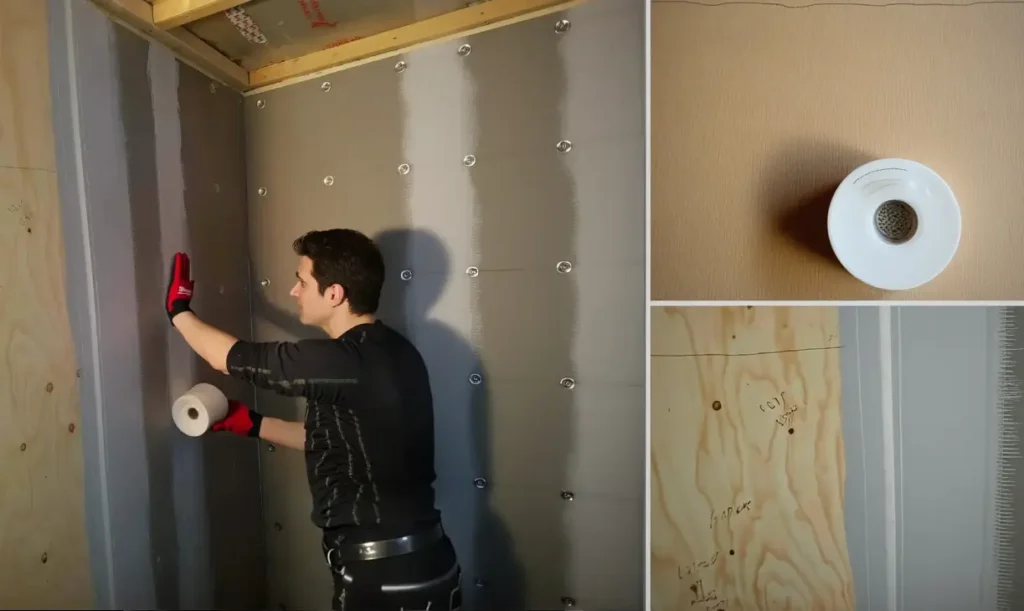
Choosing the right board here isn’t optional-it’s regulated by Norwegian building code (TEK17), and required for approval in våtrom.
Moisture-Resistant Gipsplate Installation Tips from Experts
Correct installation makes the biggest difference in durability. Here’s what we recommend on-site:
Use Moisture-Resistant Screws
In damp environments, use corrosion-resistant screws or those made specifically for våtromsgips.
Seal Every Joint
Use moisture-resistant joint compound on seams. For våtrom, certified sealing systems (membranes and tapes) are required, especially before tiling.
Don’t Mix Without Planning
If a room combines Gipsplate Humid and standard gips, ensure:
- There is a defined moisture barrier
- Finishing layers are adapted to each surface
- Weight and wall flatness are managed
Plan Ventilation
Even moisture-resistant gips will fail if airflow is poor. This is common in older homes. Ensure either mechanical ventilation or window extraction is functioning.
Hybrid Framing Needs Precision
Mixing wood and metal studs? Make sure the frame is stable and load-bearing lines are dry. Moist environments can warp wood if not sealed.
At Andronor, we regularly build hybrid frames with proper ventilation, mineral wool insulation, and certified våtrom finishes-ensuring the structure supports both moisture control and aesthetic durability.
Humidity-Resistant Gypsum vs. Standard Drywall Cost Considerations: Is It Worth Paying More?
Yes-but only where needed.
Moisture-Resistant Gips:
- Around 20–30% more in material cost than standard drywall
- Installation cost is nearly the same
- Long-term savings on mold prevention, paint bubbling, and structural repairs
In areas like bathrooms, kitchen backsplashes, or laundry rooms, paying a bit more upfront prevents future maintenance. In resale scenarios, buyers value proper våtrom handling-and a good finish always starts behind the surface.
Want to check the price difference for your space?
Use Andronor’s Estimator Tool to toggle material options and compare quotes per m², with or without installation.
Conclusion: Choose Gipsplate That Matches Room Function & Moisture Risk
Choose Based on Function, Not Just Budget
Choosing the right type of drywall is more than a building choice-it’s a function-first decision that impacts moisture control, indoor air quality, and wall durability.
Use Standard Gips When:
- The room is dry, ventilated, and not exposed to moisture
- You want fast installation and low cost
Use Gipsplate Humid When:
- There’s high humidity, steam, or risk of moisture
- Bathrooms (excluding wet zones), laundry rooms, kitchens, or basements
Use Litex / Cement Board When:
- You’re building or renovating inside wet zones (dusjsoner)
- You need full waterproofing according to Norwegian TEK17 standards
